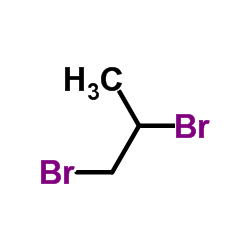Direct observation of the primary and secondary C-Br bond cleavages from the 1,2-dibromopropane photodissociation at 234 and 265 nm using the velocity map ion imaging technique.
Kyoung-Seok Lee, Ki Young Yeon, Kyung-Hoon Jung, Sang Kyu Kim
文献索引:J. Phys. Chem. A 112(39) , 9312-7, (2008)
全文:HTML全文
摘要
Photodissociation dynamics of 1,2-dibromopropane has been investigated at 234 and 265 nm by using the velocity map ion imaging method. At both pump energies, a single Gaussian-shaped speed distribution is observed for the Br*((2)P(1/2)) fragment, whereas at least three velocity components are found to be existent for the Br((2)P(3/2)) product. The secondary C-Br bond cleavage of the bromopropyl radical which is energized from the ultrafast primary C-Br bond rupture should be responsible for the multicomponent translational energy distribution at the low kinetic energy region of Br((2)P(3/2)). The recoil anisotropy parameter (beta) of the fragment from the primary C-Br bond dissociation is measured to be 0.53 (0.49) and 1.26 (1.73) for Br((2)P(3/2)) and Br*((2)P(1/2)), respectively, at 234 (265) nm. The beta value of Br((2)P(3/2)) from the secondary C-Br bond dissociation event at 265 nm is found to be 0.87, reflecting the fact that the corresponding Br((2)P(3/2)) fragment carried the initial vector component of the bromopropyl radical produced from the primary bond dissociation event. Density functional theory has been used to calculate energetics involved both in the primary and in the secondary C-Br bond dissociation dynamics.
相关化合物
| 结构式 | 名称/CAS号 | 分子式 | 全部文献 |
|---|---|---|---|
 |
1,2-二溴丙烷
CAS:78-75-1 |
C3H6Br2 |
|
Determination of 14 haloketones in treated water using solid...
2015-08-14 [J. Chromatogr. A. 1407 , 208-15, (2015)] |
|
Simultaneous quantification of trihalomethanes and haloaceti...
2015-08-21 [J. Chromatogr. A. 1408 , 22-9, (2015)] |
|
[Research concerning rutin semisynthetic derivatives. Synthe...
2008-01-01 [Rev. Med. Chir. Soc. Med. Nat. Iasi. 112(1) , 249-52, (2008)] |
|
Acute effects of 2-bromopropane and 1,2-dibromopropane on he...
2003-11-01 [Arch. Pharm. Res. 26(11) , 943-50, (2003)] |
|
[Formation process of nitrogenous disinfection byproduct tri...
2013-08-01 [Huan Jing Ke Xue 34(8) , 3113-8, (2013)] |